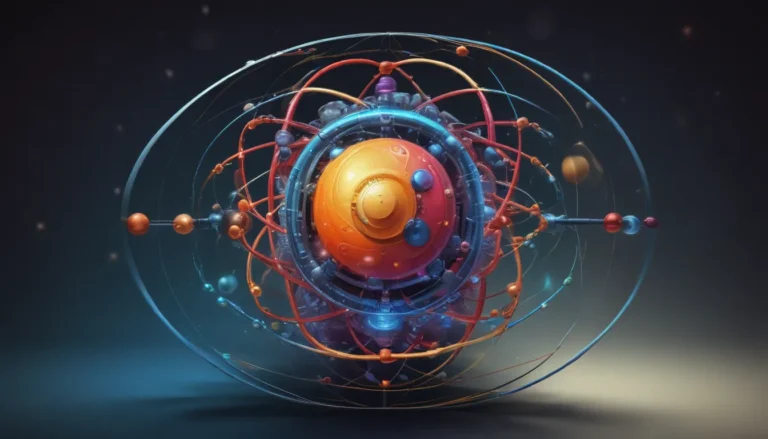A Note About Images: The images used in our articles are for illustration purposes only and may not exactly match the content. They are meant to engage readers, but the text should be relied upon for accurate information.
Effusion, a captivating phenomenon in the world of chemistry, involves the escape of gas molecules through a small opening, leading to intriguing insights and applications. From its connection to kinetic theory to its impact on various technologies and industries, effusion offers a wealth of knowledge waiting to be explored. In this article, we will embark on a journey into the mesmerizing world of effusion and uncover eight fascinating facts about this process.
Understanding Effusion: A Closer Look
Effusion is the process where gas escapes through a small opening, influencing everyday occurrences such as the hissing sound when opening a carbonated beverage or the efficiency of gas separation techniques. Graham’s Law of Diffusion plays a crucial role in calculating effusion rates, enabling scientists to design improved gas storage and transportation systems for a reliable gas supply.
The Role of Graham’s Law in Effusion
Graham’s Law states that the rate of effusion is inversely proportional to the square root of the molar mass of the gas. This means that lighter gases effuse faster than heavier ones, impacting how gases behave when escaping through small openings.
Effusion in Gas Separation Techniques
Effusion plays a key role in various gas separation processes, such as gas chromatography and membrane separation. By selectively separating different components of a gas mixture based on their rates of effusion, these techniques are essential for a wide range of applications.
The Relationship Between Effusion and Diffusion
While diffusion involves the movement of gas molecules from areas of high concentration to low concentration, effusion specifically focuses on the escape of gas through a small opening. Understanding the nuances between diffusion and effusion provides valuable insights into molecular behavior.
Everyday Applications of Effusion
Effusion is not limited to the realm of chemistry but is also prominent in our daily lives. From the functioning of fuel cells to the inflation of balloons, effusion plays a vital role in a variety of practical applications that impact our world.
The Mathematical Determination of Effusion Rates
Graham’s Law provides a formula for calculating the rate of effusion based on the molar masses of gases involved. This mathematical approach allows scientists and engineers to analyze and predict effusion rates in different scenarios, aiding in the optimization of gas-related processes.
Effusion in Gas Storage and Transportation Systems
Understanding the principles of effusion is essential for designing better gas storage and transportation systems. By optimizing the efficiency and safety of infrastructure like storage tanks and pipelines, experts ensure a reliable supply and distribution of gases for various purposes.
Exploring the Impact of Effusion in Science
Effusion remains a topic of interest for researchers and enthusiasts due to its importance in separation techniques, everyday applications, and scientific advancements. By studying effusion, scientists can deepen their understanding of gas behavior and its applications across various fields.
Conclusion
Effusion is a captivating phenomenon that holds significance in the realms of chemistry, physics, and engineering. Its role in gas separation, vacuum technology, and atmospheric pollution studies highlights the importance of understanding this process. Through exploring the insightful facts about effusion shared in this article, we gain a deeper appreciation for its complexities and applications in the world around us.
Frequently Asked Questions
-
Q: What is effusion?
A: Effusion is the process by which molecules escape from a container through a small opening or hole. -
Q: How does effusion differ from diffusion?
A: Diffusion refers to the spreading of molecules throughout a medium, while effusion specifically refers to the escape of molecules through a small opening. -
Q: What is Graham’s law?
A: Graham’s law states that the rate of effusion of a gas is inversely proportional to the square root of its molar mass. -
Q: How does temperature affect effusion?
A: With an increase in temperature, the average kinetic energy of the gas molecules increases, leading to higher effusion rates. -
Q: Can effusion be used for gas separation?
A: Yes, effusion plays a significant role in gas separation processes, such as in the production of enriched isotopes and the separation of different gases.
Effusion, with its captivating properties and diverse applications, continues to intrigue scientists and enthusiasts worldwide. By delving into the complexities of effusion, we expand our understanding of gas behavior and its impact on various scientific and industrial fields. Embrace the mysteries of effusion and unlock a world of knowledge waiting to be explored.






